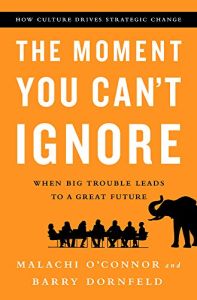Join getAbstract to access the summary!

Join getAbstract to access the summary!
Malachi O’Connor and Barry C. Dorn
The Moment You Can’t Ignore
When Big Trouble Leads to a Great Future
Public Affairs, 2014
What's inside?
When a “moment you can’t ignore” rocks your world, take stock and make crucial changes to your business.
Recommendation
Dissatisfaction grows, tensions build and conflicts arise until boom! – something so startling happens that you cannot continue business as usual. Strategy consultants Malachi O’Connor and Barry Dornfeld explain that these combustible situations result from waves of change crashing against the shore of “that’s how we’ve always done it” thinking. Workplace eruptions arise when new ways challenge old ways and simmering emotions boil over. O’Connor and Dornfeld adapted methods from field ethnography to explain how to take advantage of “un-ignorable moments” and move in new, positive directions. While the case studies gleaned from the authors’ consulting practice make interesting reading, their overuse somewhat muddies the main points. Chapter summaries or bullets would have provided a simple solution. Still, getAbstract appreciates this insiders’ look at crafting a planned response to portents of trouble ahead.
Summary
About the Authors
Malachi O’Connor and Barry Dornfeld are principals at the management-consulting firm CFAR Inc.

















Comment on this summary